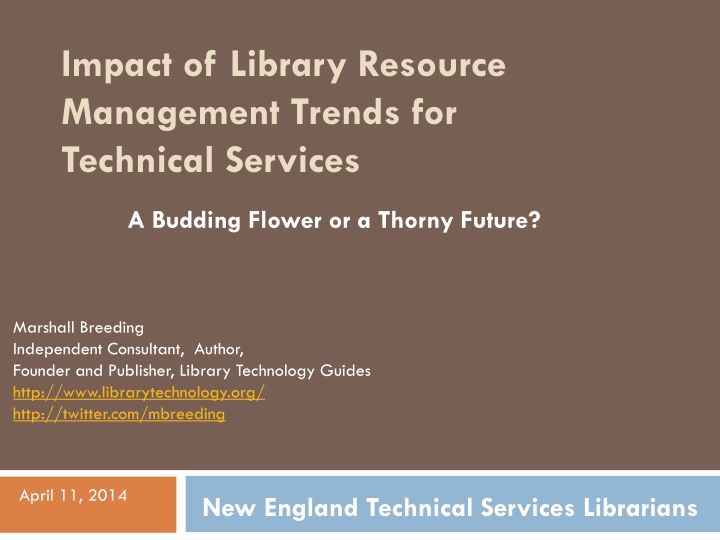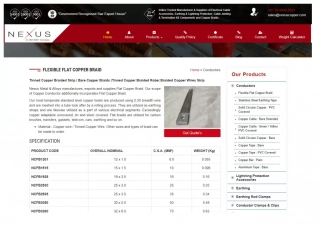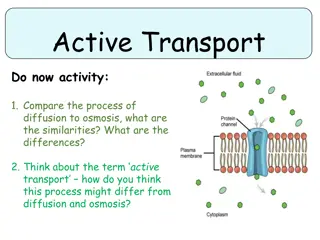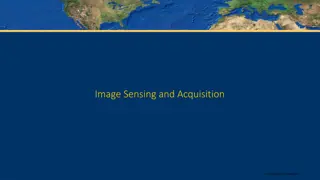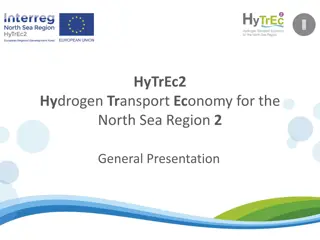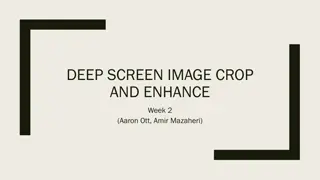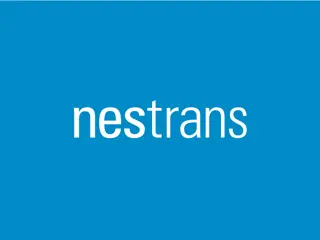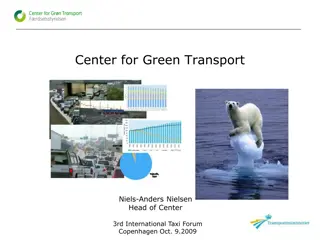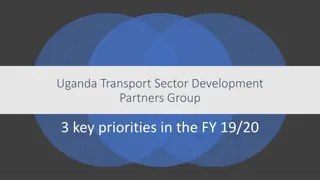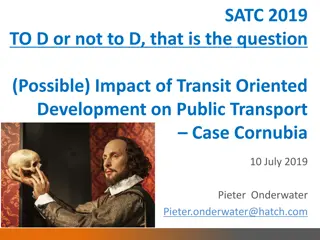Flexible Image Transport System (FITS)
FITS, Flexible Image Transport System, is a standardized format commonly used in astronomy for storing, transmitting, and processing scientific data related to images. It is defined by the FITS standard developed by NASA's Goddard Space Flight Center. FITS supports various data types and dimensions, making it versatile for handling multidimensional data. The format includes headers containing essential metadata such as keywords, extensions, and information about the data structure. Used for a wide range of applications in astronomical data analysis, FITS ensures interoperability and preservation of data integrity.
Download Presentation

Please find below an Image/Link to download the presentation.
The content on the website is provided AS IS for your information and personal use only. It may not be sold, licensed, or shared on other websites without obtaining consent from the author.If you encounter any issues during the download, it is possible that the publisher has removed the file from their server.
You are allowed to download the files provided on this website for personal or commercial use, subject to the condition that they are used lawfully. All files are the property of their respective owners.
The content on the website is provided AS IS for your information and personal use only. It may not be sold, licensed, or shared on other websites without obtaining consent from the author.
E N D
Presentation Transcript
Impact of Library Resource Management Trends for Technical Services A Budding Flower or a Thorny Future? Marshall Breeding Independent Consultant, Author, Founder and Publisher, Library Technology Guides http://www.librarytechnology.org/ http://twitter.com/mbreeding April 11, 2014 New England Technical Services Librarians
Description Breeding will give an update on the current trends in realm of resource management technologies. A new genre of Library Services Platforms has emerged, with multiple products well into their implementation phase, though others remain in development. Integrated Library Systems continue as the dominant type of product installed in most libraries. Both revolutionary and evolutionary courses seem to be underway towards a goal of more modern approaches to resource management. Any resource management tool must address the changing reality of libraries that are ever more involved with print and digital resources, with many seeing significant declines in acquisitions of print materials. New models of partnerships among institutions and shared infrastructure impact strategies on how libraries acquire, manage, and provide access to collections. Other topics addressed will include the how the work of technical services relates to Web-scale or index-based discovery services that the library might deploy.
Library Technology Industry Reports American Libraries Library Journal 2013: Rush to Innovate 2014: Strategic Competition and Cooperation 2012: Agents of Change 2011: New Frontier 2010: New Models, Core Systems 2009: Investing in the Future 2008: Opportunity out of turmoil 2007: An industry redefined 2006: Reshuffling the deck 2005: Gradual evolution 2004: Migration down, innovation up 2003: The competition heats up 2002: Capturing the migrating customer
Personnel Resources 2013 2013 2013 2012 Total Company Dev Sup Sales Admin Other Total EBSCO Information Services OCLC Ex Libris SirsiDynix EOS International Follett Software Company Innovative Interfaces, Inc. Serials Solutions The Library Corporation Polaris Library Systems VTLS Equinox Software ByWater Solutions 424 869 554 98 862 2807 1280 1250 522 369 50 341 341 256 199 93 86 20 13 194 102 222 170 60 53 46 20 14 40 536 385 120 103 124 41 27 25 164 184 63 93 50 35 52 61 52 25 17 8 2 2 10 55 5 13 3 9 2 3 15 7 11 27 361 410 255 199 97 77 18 14 5 1 7 2 12
Recent ILS Industry Contracts Company Product 2009 2010 2011 2012 2013 OCLC Innovative Ex Libris SirsiDynix Innovative TLC Ex Libris VTLS Polaris Biblionix ByWater Solutions Koha PTFS LibLime PTFS LibLime Equinox WMS Sierra Alma Symphony Millennium Library.Solution Aleph Virtua Polaris ILS Apollo 184 206 24 122 32 48 25 13 53 79 54 163 117 17 104 30 13 26 14 30 80 34 92 113 31 128 8 - 126 39 43 39 22 23 87 44 45 30 47 18 33 55 1 17 25 7 30 87 68 7 LibLime Academic Koha LibLime Koha Evergreen 7 5 6 44 15 27 21 37 37 30 12 18
Personnel Growth / Loss 800 700 600 Ex Libris 500 SirsiDynix 400 Follett Software Company Innovative Interfaces, Inc. 300 200 100 0
New-generation Library Management
Appropriate Automation Infrastructure Current automation products out of step with current realities Increasing proportions of library collection funds spent on electronic content Majority of automation efforts support print activities Management of e-content continues with inadequate supporting infrastructure New discovery solutions help with access to e-content Library users expect more engaging socially aware interfaces for Web and mobile
Library Automation in the Cloud Almost all library automation vendors offer some form of cloud-based services Server management moves from library to Vendor Subscription-based business model Comprehensive annual subscription payment Offsets local server purchase and maintenance Offsets some local technology support
Fragmented Library Management LMS for management of (mostly) print Duplicative financial systems between library and local government or other parent organization E-book lending platform (multiple?) Interlibrary loan (borrowing and lending) Self-service and AMH infrastructure Electronic Resource Management PC Scheduling and print management Event scheduling Digital Collections Management platforms (CONTENTdm, DigiTool, etc.) Discovery-layer services for broader access to library collections No effective integration services / interoperability among disconnected systems, non-aligned metadata schemes
Is the status quo sustainable? ILS for management of (mostly) print Duplicative financial systems between library and campus Electronic Resource Management (non-integrated with ILS) OpenURL Link Resolver w/ knowledge base for access to full-text electronic articles Digital Collections Management platforms (CONTENTdm, DigiTool, etc.) Institutional Repositories (DSpace, Fedora, etc.) Discovery-layer services for broader access to library collections No effective integration services / interoperability among disconnected systems, non-aligned metadata schemes
Integrated (for print) Library System Public Interfaces: Staff Interfaces: Interfaces Circulation Cataloging Acquisitions Serials Online Catalog Business Logic Data Stores Holding / Items Circ $$$ Funds BIB User Vendor Policies Transact
LMS / ERM: Fragmented Model Public Interfaces: Staff Interfaces: Application Programming Interfaces E-resource Procurement License Management Protocols: CORE Circulation Cataloging Acquisitions Serials Online Catalog ` E-Journal Titles License Terms Holding / Items Circ $$$ Funds Vendors BIB TransactUser Vendor Policies
Common approach for ERM Public Interfaces: Staff Interfaces: Budget License Terms Application Programming Interfaces Circulation Cataloging Acquisitions Serials Online Catalog Titles / Holdings Vendors Holding / Items Circ $$$ Funds BIB TransactUser Vendor Policies Access Details
Gaps in Automation Almost no systematic automation support for references and research services Customer Relationship Management? Resource sharing / Interlibrary loan management Collection development support
Comprehensive Resource Management No longer sensible to use different software platforms for managing different types of library materials ILS + ERM + OpenURL Resolver + Digital Asset management, etc. very inefficient model Flexible platform capable of managing multiple type of library materials, multiple metadata formats, with appropriate workflows Support for management of metadata in bulk Continuous lifecycle chain initiated before publication
Academic Libraries need a new model of library management Not an Integrated Library System or Library Management System The ILS/LMS was designed to help libraries manage print collections Generally did not evolve to manage electronic collections Other library automation products evolved: Electronic Resource Management Systems OpenURL Link Resolvers Digital Library Management Systems -- Institutional Repositories
Library Services Platform Library-specific software. Designed to help libraries automate their internal operations, manage collections, fulfillment requests, and deliver services Services Service oriented architecture Exposes Web services and other API s Facilitates the services libraries offer to their users Platform General infrastructure for library automation Consistent with the concept of Platform as a Service Library programmers address the APIs of the platform to extend functionality, create connections with other systems, dynamically interact with data
Library Services Platform Characteristics Highly Shared data models Knowledgebase architecture Some may take hybrid approach to accommodate local data stores Delivered through software as a service Multi-tenant Unified workflows across formats and media Flexible metadata management MARC Dublin Core VRA MODS ONIX Bibframe New structures not yet invented Open APIs for extensibility and interoperability
Library Services Platforms Category WorldShare Management Services OCLC. Alma Intota Sierra Services Platform Innovative Interfaces, Inc Kuali OLE Responsible Organization Ex Libris Serials Solutions Kuali Foundation Global network-level approach to management and discovery. Consolidate workflows, unified management: print, electronic, digital; Hybrid data model Knowledgeba se driven. Pure multi- tenant SaaS Service-oriented architecture Technology uplift for Millennium ILS. More open source components, consolidated modules and workflows Proprietary Manage library resources in a format agnostic approach. Integration into the broader academic enterprise infrastructure Key precepts Proprietary Proprietary Proprietary Open Source Software model
Development Schedule WorldShare Management Services Alma Intota Sierra Services Platform Kuali OLE General Release in July 2011 ~200 now in production 329 libraries have signed for Alma. Over 200 in production Libraries in production by 2015 336 contracts completed, many libraries in production (~250?) Version 1.0 released Dec 2013 Version 2.0 underway Summer 2014 implementations planned by University of Chicago and Lehigh University
Integrated Library Systems? ILS products continue to evolve Continue to be appropriate for libraries with active physical collections Public Libraries Development trajectory must include Integration of e-book lending Service-oriented architecture Improved support for non-print materials Evolved ILS will eventually resemble library services platforms
Evolved ILS example: Polaris Basic structure of an ILS APIs available for extensibility LEAP: development of Web-based staff interfaces Full integration of e-book discovery and lending Partnership with 3M Cloud Library Continues to see strong sales
New Library Management Model Unified Presentation Layer Search: Self-Check / Automated Return Digital Coll Library Services Platform ProQuest Consolidated index API Layer EBSCO ` JSTOR Stock Other Resources Management Enterprise Resource Planning Smart Cad / Payment systems Learning Management Authentication Service
Metadata Management MARC-based cataloging prospects Library collections shifting to electronic and digital Many components of collections appropriately described with other formats: Dublin Core, VRA,
RDA Resource Description and Access http://www.loc.gov/aba/rda/ Major change relative to resources devoted to transition Minor impact relative to operational and strategic use of metadata
BIBFRAME Emerged from the Initiative for Bibliographic Transformation of the Library of Congress http://www.loc.gov/bibframe/ bibframe.org Replacement for MARC (Machine Readable Cataloging), but broader in scope Encoded using RDF (Resource Description Framework) Major departure from MARC Today more conceptual than operational
New Technical processing workflows Demand-driven acquisitions Managing records in bulk Personnel Resources distributed among acquiring and describing electronic, print, and digital resources Resource allocation should be loosely proportionate to collection budgets and high-level strategies New systems provide more flexibility to handle multiple families of metadata
Web-scale Index-based Discovery (2009- present) ILS Data Digital Collections Search: Web Site Content Consolidated Index Institutional Repositories Search Results Aggregated Content packages Profile of Library Subscriptions Open Access E-Journals Usage- generated Data Customer Profile Reference Sources Pre-built harvesting and indexing
Demise of the local catalog? Many library services platforms do not include the concept of an online catalog dedicated to local physical inventory Designed for discovery services as public-facing interface Implication: Discovery service must incorporate detailed functionality for local materials and related services
Development / Deployment perspective Beginning of a new cycle of transition Over the course of the next decade, academic libraries will replace their current legacy products with new platforms Not just a change of technology but a substantial change in the ways that libraries manage their resources and deliver their services
Eventual product consolidation Alma for resource management Eventual transition of Voyager and Aleph Immediate transition of Verde SFX DigiTool for digital collections Primo / Primo Central for Discovery Rosetta for Preservation Possible integration into Alma?
Open source and Open Access Open source development of platform services Open source infrastructure components Open APIs to expose platform services Knowledge base components Open access Community maintained Adequately resourced
Open Systems Achieving openness has risen as the key driver behind library technology strategies Libraries need to do more with their data Ability to improve customer experience and operational efficiencies Demand for Interoperability Open source full access to internal program of the application Open API s expose programmatic interfaces to data and functionality
Open Source Integrated Library Systems Major thread in library systems development Koha Evergreen Kuali OLE
Competing Models of Library Automation Traditional Proprietary Commercial ILS Aleph, Voyager, Millennium, Symphony, Polaris, BOOK-IT, DDELibra, Libra.se LIBERO, Amlib, Spydus, TOTALS II, Talis Alto, OpenGalaxy Traditional Open Source ILS Evergreen, Koha New generation Library Services Platforms Ex Libris Alma Kuali OLE (Enterprise, not cloud) OCLC WorldShare Management Services, Serials Solutions Intota Innovative Interfaces Sierra (evolving)
Leveraging the Cloud Moving legacy systems to hosted services provides some savings to individual institutions but does not result in dramatic transformation Globally shared data and metadata models have the potential to achieve new levels of operational efficiencies and more powerful discovery and automation scenarios that improve the position of libraries overall.
Development / Deployment perspective Beginning of a new cycle of transition Over the course of the next decade, academic libraries will replace their current legacy products with new platforms Not just a change of technology but a substantial change in the ways that libraries manage their resources and deliver their services
Progressive consolidation of library services Centralization of technical infrastructure of multiple libraries within a campus Resource sharing support Direct borrowing among partner institutions Shared infrastructure between institutions Examples: 2CUL (Columbia University / Cornell University) Orbis Cascade Alliance (37 independent colleges and universities to merge into shared LSP)
Convergence Discovery and Management solutions will increasingly be implemented as matched sets Ex Libris: Primo / Alma Serials Solutions: Summon / Intota OCLC: WorldCat Local / WorldShare Platform Except: Kuali OLE, EBSCO Discovery Service Both depend on an ecosystem of interrelated knowledge bases API s exposed to mix and match, but efficiencies and synergies are lost
